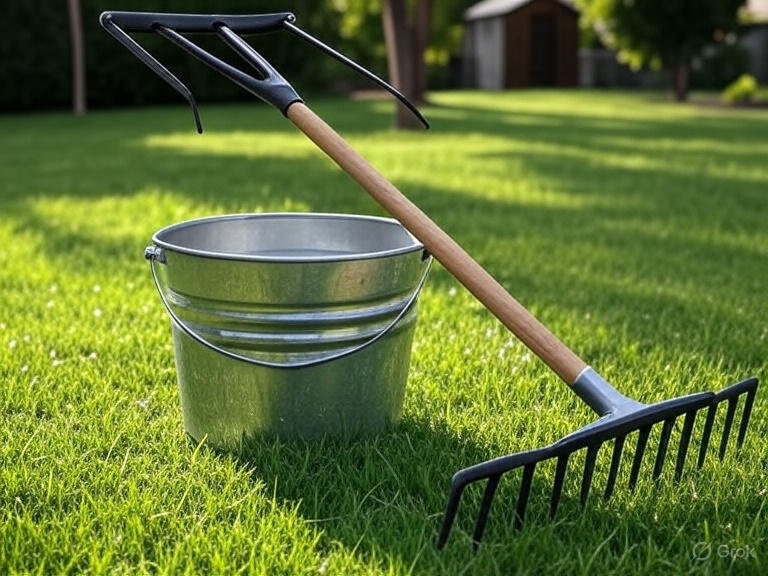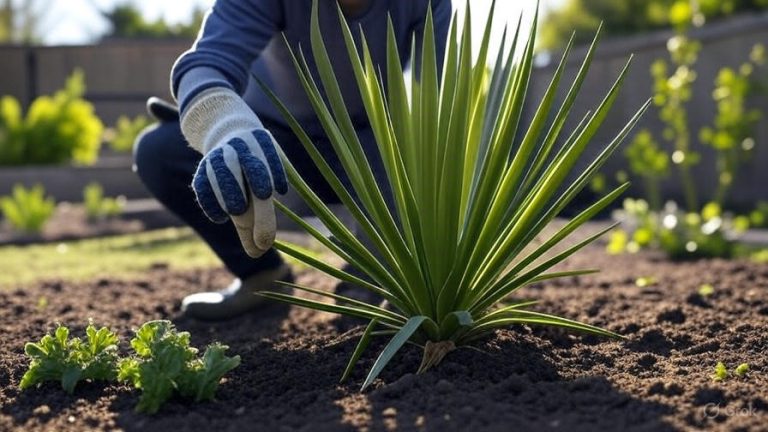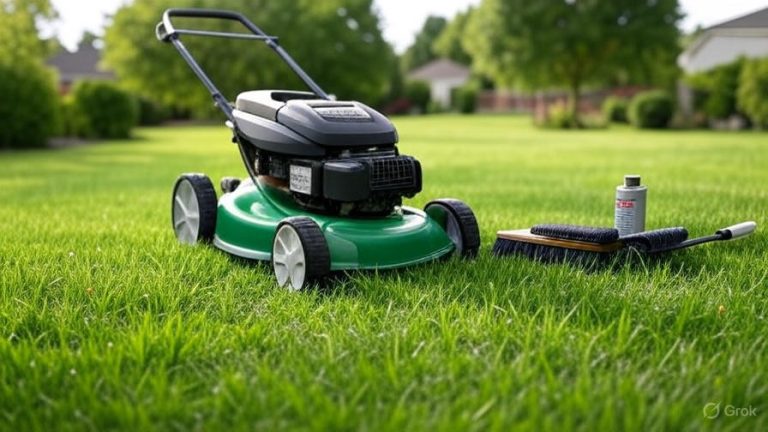How to Adapt a 3-Point Lawn Rake to Your Bucket
Turning your tractor bucket into a versatile lawn care machine becomes possible when you adapt a 3-point lawn rake for bucket use. This modification transforms standard landscape rakes into powerful debris collection tools that attach directly to your front loader or skid steer bucket.
The process requires careful planning, proper materials, and basic welding skills. Your reward will be a custom attachment that handles everything from leaf cleanup to gravel spreading with professional efficiency.
Why Convert Your 3-Point Rake for Bucket Use?
Standard 3-point hitches work great for rear-mounted implements, but front-mounted bucket attachments offer superior visibility and control. You can see exactly where you’re working and make precise adjustments on the fly.
Bucket-mounted rakes excel at collecting organic debris like leaves, grass clippings, and small branches. They also work well for spreading materials like mulch, gravel, or compost across large areas. The forward-facing position gives you better leverage and allows for more aggressive raking action.
Commercial bucket rakes cost anywhere from $800 to $2,500 depending on size and features. Converting an existing 3-point rake typically costs under $200 in materials while delivering similar performance.
Essential Tools and Materials
Your conversion project requires several key components. Start with a quality 3-point landscape rake in good condition. Look for models with replaceable tines and solid mounting points.
Required Tools:
- MIG or stick welder with appropriate safety equipment
- Angle grinder with cutting and grinding discs
- Drill with metal bits up to 1/2 inch
- Socket set and combination wrenches
- Measuring tape and square
- Metal cutting saw or plasma cutter
- Safety glasses, gloves, and hearing protection
Materials Needed:
- Steel mounting plate (1/2 inch thick minimum)
- Grade 8 bolts in various sizes
- Steel tubing or angle iron for brackets
- Welding rod or wire
- Primer and paint for rust protection
- Hydraulic cylinder (if adding tilt function)
Planning Your Rake Conversion
Measure your bucket carefully before starting any modifications. Record the width, depth, and mounting hole patterns. Most buckets have standardized attachment points, but dimensions vary between manufacturers.
Standard bucket widths range from 48 inches on compact tractors to 84 inches on larger machines. Your rake should match or slightly exceed bucket width for optimal coverage. Narrower rakes leave unworked strips while oversized units create unwanted side stress.
Consider the rake’s intended use during planning. Light-duty leaf collection requires different mounting than heavy debris removal or material spreading. Heavier applications need reinforced mounting points and stronger brackets.
Step-by-Step Conversion Process
Begin by removing the 3-point hitch mounting hardware from your rake. Save the original bolts and brackets for potential future use. Clean all mounting surfaces thoroughly to ensure proper welding adhesion.
Step 1: Create the Mounting Plate
Cut your steel plate to match the rake’s mounting pattern. The plate should extend at least 2 inches beyond the original mounting points in all directions. Mark and drill holes to match your bucket’s attachment system.
Test-fit the plate against your bucket before proceeding. Make any necessary adjustments to hole spacing or plate dimensions. The plate must sit flush against the bucket for proper load distribution.
Step 2: Fabricate Support Brackets
Design brackets that connect the mounting plate to the rake frame. These brackets handle the primary working loads and prevent excessive stress on mounting bolts. Use steel tubing or heavy angle iron for maximum strength.
Angle the brackets to position the rake at the optimal working angle. Most applications work best with the rake tines angled slightly downward from horizontal. This angle improves debris collection while preventing excessive ground pressure.
Step 3: Weld the Assembly
Clean all welding surfaces with a grinder to remove paint, rust, and contamination. Position components carefully and tack weld critical joints before completing full welds.
Use appropriate welding techniques for your material thickness. Full penetration welds provide maximum strength at stress points. Grind smooth any welds that interfere with moving parts or mounting surfaces.
Step 4: Install Pivot Points
Many rake conversions benefit from a pivot mechanism that allows the rake to follow ground contours. Install grease fittings at pivot points to ensure long service life.
Simple pin-type pivots work well for basic applications. More sophisticated designs use bushings or bearings for smoother operation. Consider maintenance access when positioning grease fittings.
Adding Hydraulic Tilt Functionality
Hydraulic tilt transforms your converted rake into a precision tool. The ability to adjust rake angle on the fly improves performance across different applications and ground conditions.
Install a hydraulic cylinder between the mounting plate and rake frame. The cylinder requires connections to your tractor’s auxiliary hydraulic system. Use quick-disconnect fittings for easy attachment and removal.
Position the cylinder to provide adequate range of motion without interfering with bucket operation. Most installations allow 15 to 20 degrees of adjustment in each direction from the neutral position.
Route hydraulic hoses carefully to avoid damage from debris or moving parts. Secure hoses with proper clamps and protect them from sharp edges. Consider using spiral hose guards in high-wear areas.
Fine-Tuning Your Converted Rake
Test your completed conversion thoroughly before putting it into regular service. Start with light materials like leaves or grass clippings to verify proper operation and identify any needed adjustments.
Check all bolts and connections after the initial test period. The stresses of actual use often reveal loose fasteners or alignment issues. Retighten everything to specification before continuing work.
Adjust tine height and rake angle based on your specific applications. Leaf collection typically works best with tines just touching the ground surface. Gravel work may require more aggressive ground contact.
Maintenance and Safety Considerations
Regular maintenance keeps your converted rake operating safely and efficiently. Inspect welds periodically for cracks or stress signs. Address any issues immediately to prevent catastrophic failure.
Lubricate pivot points according to the grease fitting schedule. Most installations need greasing every 10 to 20 hours of operation. Use appropriate grease types for your climate and application.
Check tine condition regularly and replace worn or damaged components promptly. Broken tines create safety hazards and reduce raking efficiency. Keep spare tines on hand for quick field replacements.
Store your rake attachment properly when not in use. Remove it from the bucket and store it in a dry location to prevent rust and corrosion. Touch up paint as needed to maintain protective coatings.
Troubleshooting Common Issues
Several problems commonly arise during rake conversions. Excessive vibration often indicates improper mounting or worn pivot points. Check all connections and replace worn components as needed.
Poor debris collection may result from incorrect rake angle or worn tines. Adjust the working angle and inspect tine condition. Sharp, properly positioned tines collect materials more effectively than worn ones.
Bucket interference can occur if mounting brackets extend too far forward. Redesign brackets to clear all bucket movements while maintaining adequate strength. Test full bucket range of motion after any modifications.
Performance Optimization Tips
Maximize your converted rake’s performance through proper technique and setup. Maintain consistent ground speed for uniform results. Slower speeds work better for heavy debris while faster operation suits light materials.
Overlap passes slightly to ensure complete coverage. The overlap amount depends on rake width and debris density. Heavy accumulations may require multiple passes with varying directions.
Adjust working angle based on conditions. Steeper angles work better for collection while shallower angles suit spreading operations. Learn to make adjustments quickly for changing conditions.
Cost Analysis and Return on Investment
Converting a 3-point rake typically costs $150 to $250 in materials plus labor time. Compare this to commercial bucket rakes costing $800 to $2,500 for similar capabilities.
Factor in the value of your time when calculating true project costs. Basic conversions require 8 to 12 hours of work for someone with moderate welding skills. Complex hydraulic installations may take 15 to 20 hours.
The conversion pays for itself quickly through increased efficiency and versatility. Professional landscaping operations often recover costs within the first season through improved productivity.
Alternative Mounting Methods
Not everyone has welding capabilities or wants permanent modifications. Several alternative mounting approaches work well for temporary or seasonal use.
Bolt-on mounting plates eliminate welding requirements while providing secure attachment. These systems use the bucket’s existing mounting holes and require careful engineering to handle working loads safely.
Clamp-style mounts offer quick installation but work best with lighter rakes and gentle applications. Heavy-duty versions use multiple clamps with reinforcing structures to distribute loads properly.
Conclusion
Converting a 3-point lawn rake for bucket use creates a versatile attachment that handles multiple landscaping tasks efficiently. The project requires careful planning, appropriate materials, and solid fabrication skills but delivers professional results at a fraction of commercial costs.
Success depends on proper engineering of mounting systems and attention to safety throughout the conversion process. Take time to plan thoroughly and execute each step carefully for the best results.
Your converted rake will provide years of reliable service when properly built and maintained. The versatility and performance improvements over standard 3-point mounting make this conversion worthwhile for most property owners and landscaping professionals.
Start with a quality 3-point rake and invest in proper materials and techniques. The result will be a custom bucket attachment that rivals commercial units while costing significantly less. This practical modification transforms your tractor into a more capable and efficient landscaping machine.







